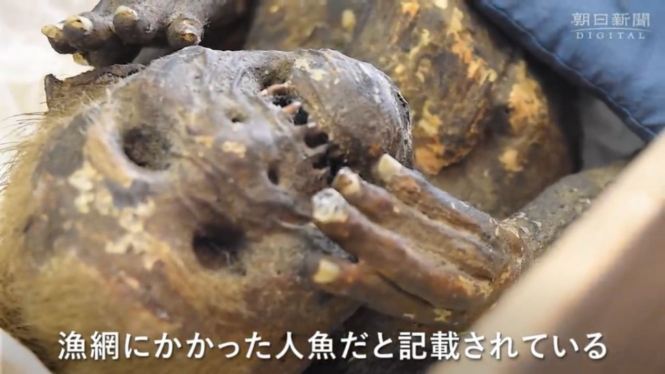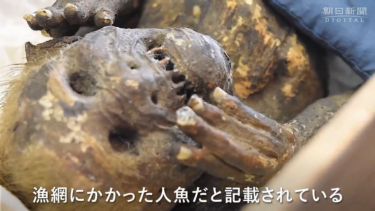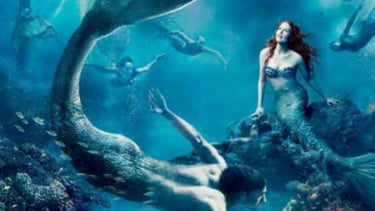Mermaid Mummy Discovered in Japan Has Weirder Look, Scientists Say
- The Asahi Shimbun
VIVA – A centuries-old mermaid mummy was revealed by scientists to have a weird look. It was said to be a doll formed from animal parts, even more, grotesque than previously thought, according to the findings.
In 2022, researchers discovered the mermaid, which is around 12 inches (30.5 centimeters) long, lying inside a sealed wooden box in a Japanese temple, located in Okayama Prefecture.
At that time, researchers thought it was made from the torsi and head of a monkey sewed onto a decapitated fish’s body.
The haunting hybrid, which resembles a Ningyo from Japanese mythology — a fish-like creature with a human head that is fabled to help cure disease and increase longevity — had previously been displayed in a glass case at the temple for people to worship, before being stored away more than 40 years ago.
Ilustrasi putri duyung.
- U-Report
A letter inside the mummy's box claims that the specimen was caught by a fisherman sometime between 1736 and 1741, but it was likely created decades after that as a hoax to sell to affluent people wanting to improve their health or live longer lives.
Researchers from the Kurashiki University of Science and the Arts (KUSA) in Japan took possession of the mermaid in early February 2022 (with permission from the temple’s priests and began studying the eerie artifact using a range of techniques including X-ray and CT (Computerized tomography) scanning, radiocarbon dating, electron microscopy, and DNA analysis.
On February 7, the team finally released its findings in a KUSA statement and what they found out about the mermaid was even more bizarre than expected, as reported from the live science site.
Furthermore, the results showed that the mermaid’s torso did not belong to a monkey but instead was made predominantly from cloth, paper, and cotton that was held together by metal pins running from the neck to the lower back. Even it has also been painted with a paste made from a mix of sand and charcoal.
However, the torso was covered in components stripped from other animals. Mammal hair and fish skin, likely from a pufferfish, covered parts of the arms, shoulders, neck, and cheeks.
The mermaid's jaw and teeth were also likely taken from a predatory fish, and its claws were made from keratin, meaning they likely came from a real but unidentifiable animal. Then, the lower half of the mermaid did come from a fish, likely a species of croaker, a ray-finned fish that makes a croaking sound with its swim bladder, which helps it control its buoyancy.
The researchers were not able to identify any complete DNA from the mermaid, but radiocarbon dating of the scales indicated they could date back as far as the early 1800s.
The new analysis suggests that the mermaid was most likely created to trick people into believing that Ningyos and their supposed healing abilities were real, researchers wrote. However, it also shows that the tricksters behind the creation also put much more effort into stitching together the counterfeit creature than expected.
There are 14 other "mermaids" that have been found in Japan, and the team now hopes to analyze others for comparison.





























